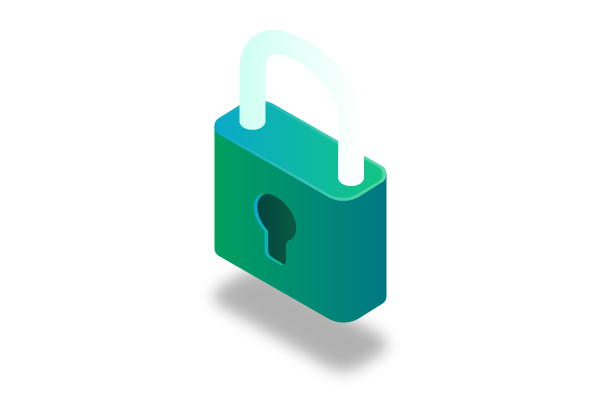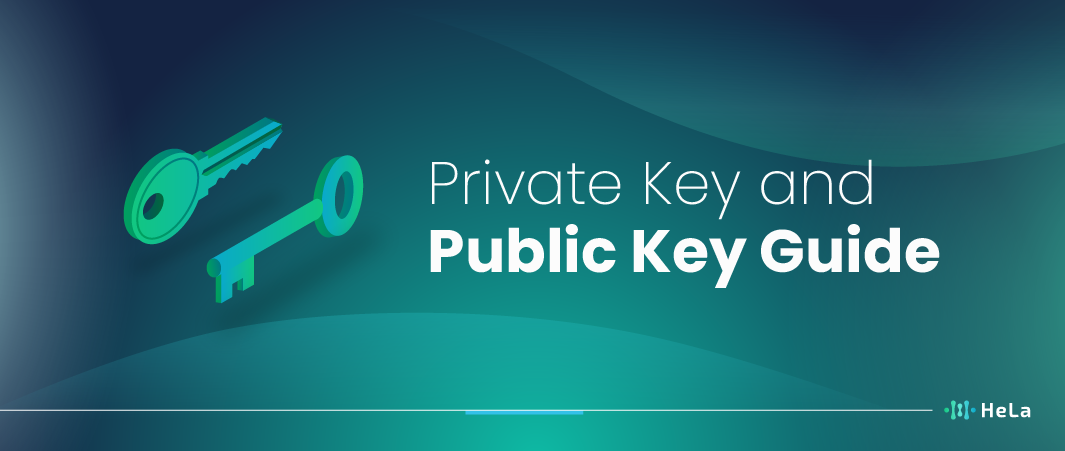In the evolving landscape of the digital age, ensuring the security and privacy of information has become paramount. At the heart of many security protocols are two pivotal components: the private key and the public key. Both play essential roles in the realms of encryption, decryption, and authentication. This article delves into the intricate world of these keys, unraveling their definitions and emphasizing their unique differences.
The terms ‘private key’ and ‘public key’ often conjure up images of complex algorithms and impenetrable codes. However, at their core, they represent simple yet powerful concepts. They serve as the linchpins of the cryptographic systems that underpin much of today’s internet security.
Grasping the essence of private and public keys can not only enhance one’s understanding of digital security but also shed light on the broader subject of cryptography. Whether you’re a tech enthusiast or a professional seeking clarity, this exploration promises a comprehensive overview of these fundamental elements.
Private and Public Keys Definition

Private and public keys are integral parts of asymmetric cryptography. Unlike symmetric cryptography, where a single key is used for both encryption and decryption, asymmetric cryptography employs two distinct keys: one for encryption and another for decryption.
Private Key
The private key is like a super-secret password, known only to its owner. Imagine it as the key to a locked treasure chest. This key’s job is to unlock information that has been safely locked up using its matching public key. Keeping this key hush-hush is incredibly important because having it means you can open and understand all the secret messages that were locked up with it. It’s like having the ultimate decoder ring!
Think of it this way: the public key is like a lock that anyone can use to secure a message, but only the private key holder can unlock it. So, treat your private key like your top-secret combination – keep it safe and don’t share it with anyone you don’t trust completely.
Public Key
Think of your public key like a special padlock that you hang on your front door for everyone to see. This padlock is designed to lock up information securely. When someone wants to send you a secret message, they put it inside a box and lock it with your padlock. Only you, with your unique key, can open this padlock to read the message inside. It’s like having a mailbox with a key that only you have.
So, your public key is like a lock that others use to keep your messages safe, and only your private key can unlock it. It’s a bit like having a personal, secret code that ensures your private messages stay private.
Also Read: The Top 10 Fastest Layer 1 Blockchain Networks
How Do Private and Public Keys Work Together?

Private and public keys work together like a lock and a key for a mailbox. Think of it this way: imagine you have a mailbox with a special slot and a unique lock. This mailbox represents your digital communication. Anyone can drop a letter (which is like your data) into the slot, and this letter gets automatically locked with the public key. However, only the person who possesses the key to the lock, called the private key, can open the mailbox and read the letter by decrypting the data inside.
Now, let’s say Alice wants to send a secret message to Bob over the internet. She uses Bob’s public key to encrypt her message. This is like putting the message in the mailbox and locking it with Bob’s unique lock. When Bob receives the encrypted message, he uses his private key, his secret key, to unlock the mailbox and read the message. This system ensures that even if someone tries to intercept the message while it’s traveling through the internet, they won’t be able to understand it because they don’t have Bob’s private key.
So, in the world of digital communication, the private key and public key work together like a lock and a key for your mailbox, making sure your messages stay private and secure.
Why Are These Keys Crucial for Digital Security?

The digital age has ushered in unprecedented levels of data sharing and online interactions. With this comes the risk of data breaches, unauthorized access, and cyber threats. Private and public keys serve as guardians against such threats.
Data Confidentiality
Data confidentiality is like having a secret code for your digital information. Imagine you have a special pair of keys: one is your private key, and the other is your public key. These keys work together like a lock and key. When you want to keep your data safe, you use your public key to lock it up. It’s like putting your information inside a strong, invisible vault. Now, here’s the cool part – even if a sneaky hacker manages to get their hands on your locked-up data, they can’t do anything with it without the corresponding private key, which only you have. It’s like having the key to open that vault, and without it, the hacker is stuck outside, scratching their head.
So, why is this important? Well, in our digital world, there are always folks trying to access information that doesn’t belong to them. By using this private key and public key system, you can sleep soundly knowing that your data is secure. It’s like having a personal digital bodyguard for your precious information. So, whether it’s your photos, messages, or important documents, you can trust that they’re safe from prying eyes as long as you keep that private key in your pocket – both literally and figuratively.
In essence, data confidentiality with a private key and public key is your digital shield. It’s the modern-day equivalent of locking your valuables in a safe. You’re the only one with the key, so your data remains private, even in a world filled with digital treasure hunters.
Authentication
In addition to keeping information safe, private keys and public keys also play a crucial role in making sure digital stuff is genuine. You see, when someone uses their private key to put their stamp on something, like a digital document or message, anyone can double-check if it’s the real deal using that person’s public key.
Here’s how it works: the private key is like a secret code only the owner knows, while the public key is more like a public address that everyone can see. So, when you sign something with your private key, it’s as if you’re putting your unique, secret mark on it. Then, anyone who has your public key can look at what you’ve signed and say, “Hey, this matches the mark we know belongs to this person, so it must be authentic!” It’s kind of like having a special seal on an important letter that everyone can verify.
So, these private and public keys work together to make sure that digital stuff isn’t tampered with and that you can trust it. It’s like having a secret handshake that proves you’re you in the digital world!
Non-repudiation
Digital signatures provide a strong layer of security, and one of their key benefits is ensuring non-repudiation. Let’s break this down a bit. When you use a digital signature, you’re essentially using two keys: a private key and a public key. Your private key is super-secret and known only to you, while your public key is available to anyone.
Now, here’s where the magic of non-repudiation comes in. When you sign something with your private key, it’s like putting your unique digital stamp on it. You can’t later pretend you didn’t do it because your private key is like your digital fingerprint. It proves beyond a shadow of a doubt that you’re the one who signed the document or message. So, it’s a bit like signing your name on a piece of paper, but in the digital world.
This is incredibly important in the digital age because it means you can trust the authenticity of digital documents and transactions. When someone signs something with their private key, there’s no going back. It’s a rock-solid way to ensure that people can’t wriggle out of their digital commitments, and that’s why non-repudiation is a big deal in the world of cybersecurity and online transactions.
Also Read: What is Layer 1? Definition and How does it work
Common Applications of Private and Public Key Systems
Asymmetric cryptography, a cryptographic technique relying on the use of a private-public key pair, boasts a vast array of versatile applications across the digital landscape. This ingenious method of encryption not only ensures secure communication and data protection but also plays a pivotal role in digital signatures, secure online transactions, and identity verification, safeguarding the integrity and confidentiality of information in an interconnected world.
Its versatility extends to securing email communications, authenticating users in online platforms, and enabling the trustworthiness of websites through SSL/TLS certificates, thereby forming the bedrock of modern cybersecurity and the seamless functioning of our digital age. Underpinned by the private-public key pair, has myriad applications:
SSL/TLS Certificates
SSL/TLS certificates are like online security bodyguards for websites. They play a crucial role in making sure that the information sent between a website’s server and the user’s device stays safe and hidden from prying eyes. These certificates come in a pair – one is the private key, which is like a secret code only the website knows, and the other is the public key, which is shared with anyone who wants to communicate securely with the site.
When you visit a website, your browser and the site’s server use these keys to establish a secure connection. It’s a bit like a secret handshake between your device and the website, ensuring that all the data you send and receive, like passwords or credit card details, remains encrypted and protected from hackers and eavesdroppers. So, in a nutshell, SSL/TLS certificates are the online guardians that use private and public keys to keep your online interactions safe and sound.
Digital Signatures
Digital signatures are crucial for ensuring the legitimacy of digital documents, such as contracts or software. They work like an online handshake, where both parties use special keys, known as private key and public key, to validate the document’s authenticity. Here’s how it works:
When someone creates a digital document, they use their private key to generate a unique digital signature. This signature is like a virtual seal that can only be created with their private key, which is kept securely. When they share the document, along with their public key, anyone can use the public key to check the signature’s validity. If the signature matches the document and was created with the private key, it confirms that the document hasn’t been tampered with and comes from the rightful sender. This process ensures trust and security in our increasingly digital world, making sure that important agreements and software remain safe and authentic.
Cryptocurrencies
Cryptocurrencies, such as Bitcoin, operate using a fundamental system of private keys and public keys for carrying out transactions. In this system, each user has a pair of keys: a private key, which is like a secret password only known to them, and a public key, which is akin to a user’s public address. When someone wants to send cryptocurrency to another person, they use the recipient’s public key to ensure the funds go to the right place. The private key, on the other hand, is kept secure and is crucial for authorizing transactions from the user’s account. It’s this combination of private and public keys that ensures the security and integrity of cryptocurrency transactions in the blockchain network, making it a trusted and decentralized way of handling digital money.
Secure Email Services
Secure email services, like those employing Pretty Good Privacy (PGP), rely on a pair of keys – the private key and public key – to safeguard the confidentiality and legitimacy of email communication. These keys work in tandem to create a digital lock and key system.
Your private key is like a secret key that only you possess. It’s used to encrypt your emails, essentially turning your message into an unreadable code that can only be deciphered by someone who possesses the corresponding public key – which is freely shared with your intended recipient. This public key serves as the digital lock, allowing others to securely send you encrypted messages that only your private key can unlock. By utilizing these keys, secure email services ensure that your emails remain private and tamper-proof, fostering trust and confidentiality in your online communications.
Private and Public Key Differences
Private keys and public keys are fundamental concepts in public-key cryptography, a foundational element for many cryptographic protocols, including encryption, digital signatures, and authentication. Here’s an overview of their differences:
Definition
- Private Key: A secret key that is kept confidential and only known to its owner.
- Public Key: A key that is made publicly available and can be distributed openly without compromising security.
Purpose
- Private Key: Used for decrypting messages that were encrypted with the corresponding public key and signing digital signatures.
- Public Key: Used for encrypting messages intended for the holder of the corresponding private key and verifying digital signatures.
Distribution
- Private Key: Must remain confidential. If someone else gains access to a private key, the security of the system is compromised.
- Public Key: Can be freely distributed without compromising security. It’s often made available through directories or public key infrastructures.
Generation
- Both keys are generated together as a pair. The security of public-key systems is based on the mathematical relationship between the private key and the public key, such that deriving the private key from the public key should be computationally infeasible with current technologies.
Loss Implications
- Private Key: If lost and there’s no backup, encrypted messages can’t be decrypted, and digital signatures can’t be made. If stolen, an attacker might impersonate the owner, decrypt confidential messages, or sign malicious content.
- Public Key: If lost, it can often be retrieved from a public directory or the party that provided it originally. If an unauthorized modification occurs, it can be used to send encrypted messages that the legitimate private key holder can’t decrypt or to create false signatures.
Length and Complexity
- Both keys are typically long and complex, ensuring they can’t be easily guessed. The exact length and structure depend on the cryptographic algorithm in use.
Examples of Usage
- Encryption/Decryption: If Alice wants to send Bob a confidential message, she encrypts it with Bob’s public key. Only Bob, who has the corresponding private key, can decrypt and read the message.
- Digital Signatures: If Alice wants to sign a message to prove it’s genuinely from her, she signs it with her private key. Anyone can verify the signature using her public key.
Lifespan
- Depending on the system’s security policies and potential vulnerabilities discovered in cryptographic algorithms, both private and public keys might have a limited lifespan after which they need to be regenerated.
Understanding the relationship and differences between private and public keys is essential for grasping many of the cryptographic systems in use today.
Conclusion
Private keys and public keys, though opposites in their functionalities, come together to create a robust defense against the myriad threats of the digital age. Their seamless interplay ensures that our data remains confidential, while also offering tools for verification and authenticity.
As we move forward in the digital era, the importance of understanding and implementing secure cryptographic systems only grows. By demystifying the core concepts like private and public keys, we equip ourselves to navigate the digital world with a heightened sense of security and awareness.
The journey of digital security is long and winding, but with the power of cryptography, spearheaded by private and public keys, we have potent tools at our disposal. The onus is on us to wield them wisely, ensuring a safer, more secure digital future for all.
Disclaimer: The information provided by HeLa Labs in this article is intended for general informational purposes and does not reflect the company’s opinion. It is not intended as investment advice or recommendations. Readers are strongly advised to conduct their own thorough research and consult with a qualified financial advisor before making any financial decisions.

Hi, I'm Carina, and I've been captivated by the world of web3 for as long as I can remember. Ever since I first dipped my toes into this innovative technology, I've found myself drawn to exploring and understanding its infinite potential. The complexities of layer 1 solutions particularly intrigue me, as they form the foundation of decentralized networks and pave the way for a more transparent and efficient digital landscape.
- Carina Caringalhttps://helalabs.com/blog/author/carina-caringal/
- Carina Caringalhttps://helalabs.com/blog/author/carina-caringal/
- Carina Caringalhttps://helalabs.com/blog/author/carina-caringal/
- Carina Caringalhttps://helalabs.com/blog/author/carina-caringal/

